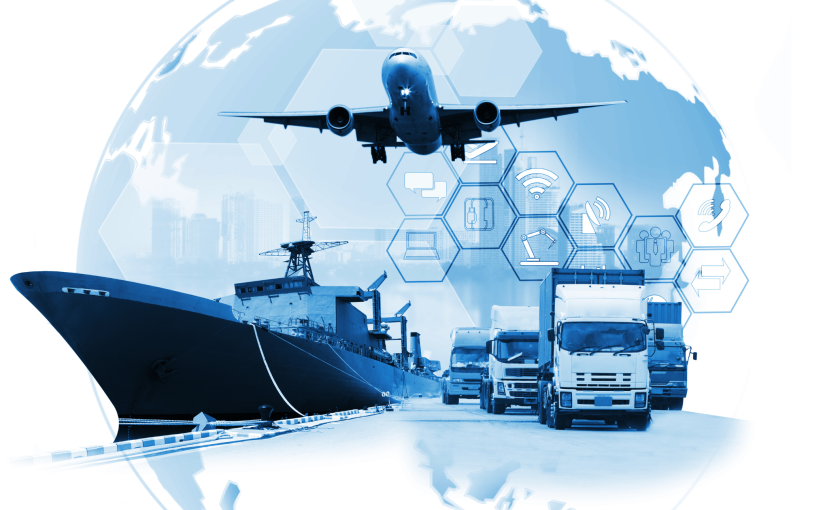Physical infrastructure is not the only driver of your ecommerce shipment anymore; data is an equally powerful navigator overhauling the logistics game. The rapid adoption of IoT technology is leading to an exponential surge in data. Concurrently, AI is pushing boundaries to process this vast influx of data, powering advanced analytics systems.
Logistics, as we know, comprises various stakeholders along the supply chain, such as manufacturers, storage units, distributors, freight forwarders, and 3PL companies, among different third-party vendors. In today’s modern era, automated systems are required to comprehend the data-rich landscape and optimize the movement of shipments across the supply chain.
IoT and analytics deliver exactly that, and the market sentiment is bullish. As per Allied Market Research, the global market value of IoT in transportation could break all records and reach $495 billion by 2030.
In this article, we’ll highlight four noteworthy areas that are implementing IoT and analytics into logistics.
Shipments Tracking and Monitoring
Logistics services implement IoT at scale for seamless monitoring of shipments. For example, shipments might move through different geographic regions with extreme environmental conditions during long-route transportation. Using wireless devices, RFID tags, GPS sensors, and eSIM, IoT systems can track real-time location and fetch essential details such as location, weather, volume, potential faults, container temperature fluctuations, moisture, humidity, and other environmental factors that could impact the shipment.
Furthermore, IoT analytics can identify and alert against the risk of external damage caused by reckless driving during transit. Embedded route optimization systems provide in-the-moment motion of containers and trigger alerts if there’s a change in the committed route. This enables logistics services to ensure the safe movement of goods such as pharmaceuticals, fresh produce, etc. The IoT device network streams the real-time data on the app and triggers alerts in pre-defined cases.
Optimized Warehousing
Regarding warehousing, IoT sensors use wireless devices to help maintain uniform temperature, humidity levels, and adapt to other environmental conditions throughout the warehouse’s facility. This also includes triggering an alarm during a fire, water leakage, or other irregular event.
Next, the IoT network can quickly and efficiently update the number of goods to maintain inventory statuses. IoT-connected facilities like these make it easy to store perishable items.
When stock levels reach a certain threshold, the system can trigger re-orders, ensuring that products are always in stock and reducing the risk of stockouts.
Amazon’s automated warehouses are the best case studies to understand this. In addition to monitoring the conditions of the products and their temperatures, Amazon uses IoT to move their forklifts. Moreover, Amazon is identifying areas of the warehouse where forklifts are spending too much time or are frequently getting in the way of each other. Amazon then takes steps to address these issues, such as changing the layout of the warehouse or adding new loading docks.
Digital Freight Forwarding
IoT and automation play a significant role in optimizing digital freight forwarding. IoT-powered automation greatly enhances freight forwarding, which is the process of shipping goods internationally between manufacturers, warehouses, fulfillment centers, etc., by opening up their platforms for services such as online booking and real-time shipment tracking. All the above-mentioned applications, such as tracking temperatures, location, safety, inventory, etc., can be streamed to freight forwarding dashboards.
Given AI’s power to process large volumes of data, digital freight forwarding can provide business owners exact forecasts and tools to analyze demand patterns, helping them make more informed decisions.
AI computer programs can give helpful ideas by carefully analyzing past shipping data, market trends, and weather fluctuations. This information makes planning the most optimal routes easier, determining how much space is needed and managing the volume to keep in stock.
Drones
Any discussion around IoT and delivery is incomplete without mentioning drones. In recent years, their adoption has picked up, and logistics companies are exploring the possibility of deploying them in large numbers to enable various applications. As drones are an integral aspect of the machine network of the IoT, they help improve navigation within warehouses, guard inventories, provide clients with instant in-store deliveries, address last-mile issues, and more.
By 2028, the drone delivery market is expected to reach USD $11.66 billion, further strengthening the prospects of drone technology going mainstream. This will significantly cut costs, speed up delivery time, and improve customer satisfaction.
Summing up
In today’s rapidly growing ecommerce landscape, logistics companies face unique challenges and are pressured to offer efficient and secure services. As such, the sector is undergoing a transformative shift in which data has become just as essential as physical infrastructure. IoT and AI are leading this initiative, enhancing shipping processes worldwide.
Featured Image Credit:


















